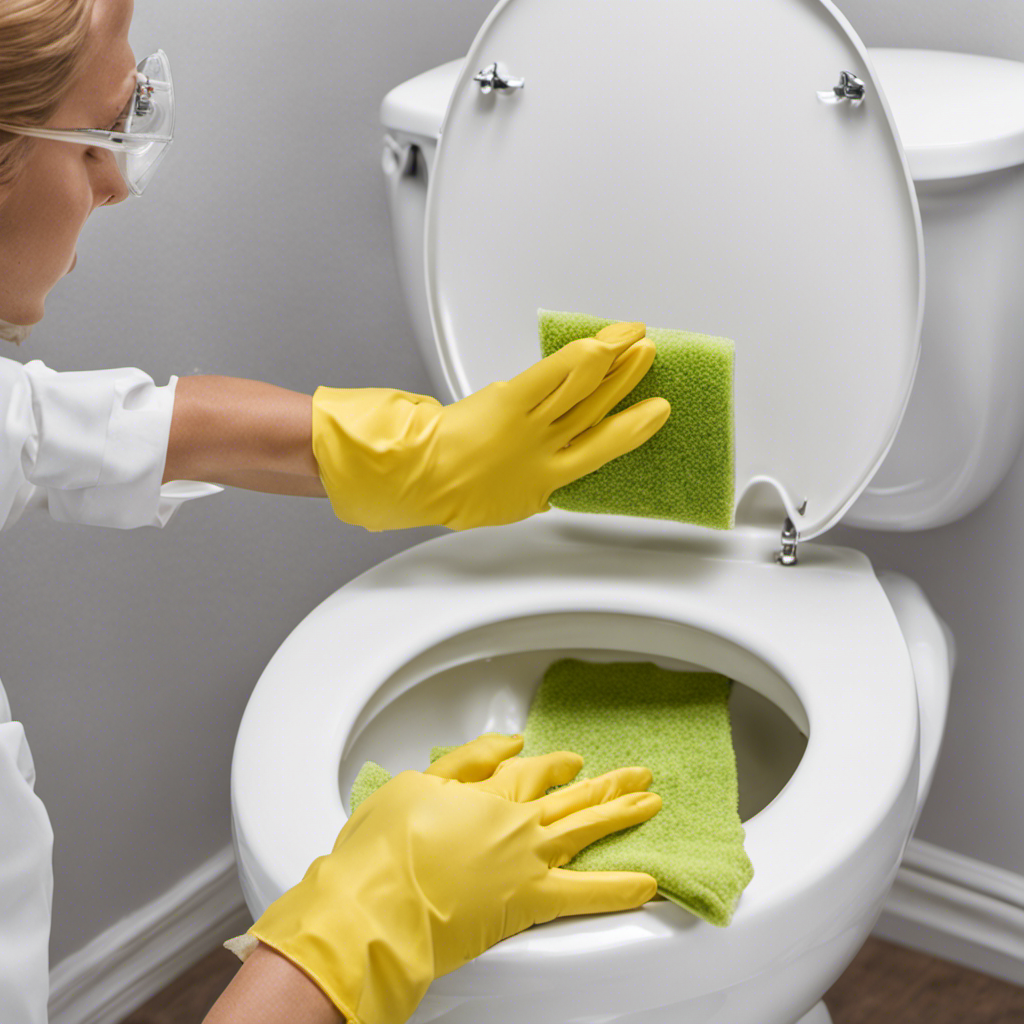Do you ever feel a persistent discomfort after using toilet paper? It might just be irritation, but it could also be a sign of an allergy.
In this article, I’ll help you differentiate between the two and provide you with valuable insights on how to tell if you’re allergic to toilet paper.
We’ll explore common symptoms, discuss the causes, and even dive into diagnostic tests.
With this knowledge, you’ll be better equipped to manage and prevent toilet paper allergies.
Key Takeaways
- Irritation and allergies from toilet paper can cause symptoms such as itching, redness, swelling, and hives.
- Allergies are immune system responses to specific allergens, while irritation is a mild reaction from contact with certain substances.
- Allergic reactions to toilet paper are often triggered by substances like dyes, fragrances, or chemical additives.
- Diagnostic tests such as patch tests, skin prick tests, and blood tests can help accurately diagnose toilet paper allergies.
Differentiating Between Irritation and Allergy
It’s important to understand the difference between irritation and allergy when it comes to toilet paper.
Irritation refers to a mild reaction that can occur when the skin comes into contact with certain substances, such as chemicals or rough textures.
On the other hand, allergies are immune system responses to specific allergens, such as certain chemicals or proteins in toilet paper. Allergies can cause more severe symptoms, including itching, redness, swelling, and even hives.
It’s also important to note that individuals with existing skin conditions, such as eczema or psoriasis, may be more prone to developing irritation or allergies from toilet paper.
If you experience persistent or worsening symptoms after using a specific brand or type of toilet paper, it’s best to consult a healthcare professional for further evaluation and guidance.
Common Symptoms of Toilet Paper Allergies
You may experience common symptoms like itching and redness if you’re allergic to toilet paper. When exposed to toilet paper, individuals with an allergy may develop skin irritation, which can manifest as itching, redness, and even a rash. These symptoms occur due to an immune response triggered by certain substances present in the toilet paper, such as dyes, fragrances, or chemical additives.
To treat toilet paper allergies, it is essential to identify the specific allergen causing the reaction. This can be done through allergy testing conducted by a healthcare professional. Once the allergen is identified, avoiding contact with it is the primary treatment. However, if symptoms persist, over-the-counter antihistamines or topical corticosteroids may provide relief.
Additionally, some individuals may find relief by using hypoallergenic, fragrance-free toilet paper or by using alternative materials like bidets.
Understanding the Causes of Toilet Paper Allergies
Understanding the causes of TP allergies can help individuals identify specific allergens triggering their immune response. When it comes to toilet paper allergies, there are several potential allergens that can be found in this everyday product. These allergens include:
-
Fragrances: Toilet papers often contain fragrances that can be irritating to sensitive skin. These fragrances are added to enhance the smell of the paper but can cause allergic reactions in some individuals.
-
Dyes: Toilet paper may also contain dyes to give it a more appealing appearance. However, these dyes can cause skin irritation and allergies in certain people.
-
Chemicals: Toilet paper can be treated with chemicals like bleach or formaldehyde to enhance its performance. These chemicals can trigger allergic reactions in individuals with sensitivities.
Diagnostic Tests for Toilet Paper Allergies
To accurately diagnose allergies related to toilet paper, doctors may recommend specific diagnostic tests. These tests can help determine if a person has a sensitivity to the materials or chemicals present in toilet paper.
One common test is a patch test, where small amounts of different substances found in toilet paper are applied to the skin and monitored for any allergic reactions. Another option is a skin prick test, where tiny amounts of allergens are pricked into the skin to observe for any allergic response. In some cases, blood tests may also be conducted to measure specific antibodies related to toilet paper allergies.
Once a diagnosis is made, individuals with toilet paper sensitivity can explore alternative toilet paper options that are hypoallergenic or made from different materials, such as bamboo or recycled paper. Transitioning into the next section about managing and preventing toilet paper allergies, it is important to note that these alternative options can help reduce the risk of allergic reactions.
Managing and Preventing Toilet Paper Allergies
When managing and preventing toilet paper allergies, it’s important to consider using hypoallergenic or alternative options made from different materials. These alternatives can help reduce the risk of allergic reactions and provide a comfortable experience.
Here are three options to create imagery in your mind:
-
Bamboo toilet paper: Made from sustainable bamboo, this option is soft, durable, and naturally hypoallergenic.
-
Recycled toilet paper: This eco-friendly choice is made from recycled paper and is free from harsh chemicals, reducing the risk of irritation.
-
Bidets: Using a bidet can eliminate the need for toilet paper altogether, providing a gentle and hygienic cleansing experience.
It’s essential to remember that allergic reactions can also be caused by other bathroom products such as soaps, lotions, or dyes in toilet paper. By exploring alternative options and being mindful of potential allergens, you can manage and prevent toilet paper allergies effectively.
Frequently Asked Questions
Can Using a Different Brand of Toilet Paper Help Alleviate Irritation or Allergy Symptoms?
Using a different brand of toilet paper may help alleviate irritation or allergy symptoms. Different types of toilet paper materials can have varying effects on skin sensitivity. There may be a correlation between toilet paper allergies and skin conditions like eczema.
Are There Any Alternative Products to Toilet Paper That Can Be Used by Individuals With Toilet Paper Allergies?
There are alternative toilet paper options available for individuals with toilet paper allergies. Managing toilet paper allergies effectively involves finding the right alternative products that are gentle on the skin.
How Long Does It Take for Symptoms of a Toilet Paper Allergy to Appear After Contact With the Allergen?
After contact with toilet paper, symptoms of a toilet paper allergy can appear within minutes to hours. Some individuals may find relief by trying different toilet paper brands or using alternative products for toilet paper allergies.
Can a Toilet Paper Allergy Be Triggered by Other Factors, Such as Fragrances or Chemicals Used in the Manufacturing Process?
Yes, fragrance sensitivity and exposure to chemical irritants during the manufacturing process can trigger a toilet paper allergy. It’s important to pay attention to any symptoms that may arise after using scented or chemically-treated toilet paper.
Are There Any Long-Term Consequences or Complications Associated With Untreated Toilet Paper Allergies?
Untreated toilet paper allergies can have long-term consequences and complications. These may include persistent skin irritation, inflammation, and increased risk of infection. It is important to seek medical attention for proper diagnosis and treatment.
Conclusion
In conclusion, identifying whether you have an allergy to toilet paper can be a challenging task. By understanding the differences between irritation and allergy, recognizing common symptoms, and knowing the causes, you can start to navigate this issue.
Diagnostic tests can provide a definitive answer, and managing and preventing toilet paper allergies is possible with the right measures.
Remember, just like a detective solving a mystery, you can uncover the truth behind your toilet paper allergy and find relief.










